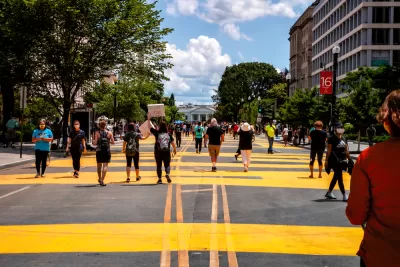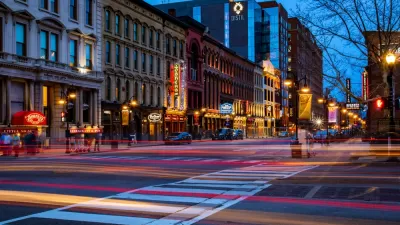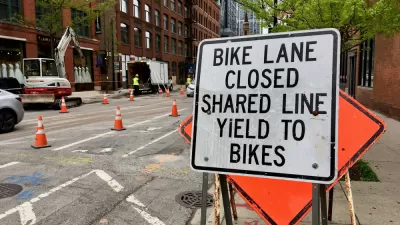Washington, D.C. was an early adopter of Vision Zero in the United States, but eventually it became emblematic of the country's lack of progress in reducing traffic collisions.

Vision Zero programs all over the country and world set goals to eliminate traffic fatalities for all road users—from drivers to pedestrians to people on bikes—but in the United States they have yet to find much success. Traffic collisions and fatalities continue to rise, even during the low-driving years of the pandemic.
Washington D.C.'s Vision Zero program has, for better or worse, has exemplified the shortcomings of Vision Zero in the United States. Lofty ambitions, best intentions, soundbites from politicians, and the high hopes from advocates have yet to produce results. Planetizen has cited D.C. example as an example of what not to do to achieve Vision Zero since 2015, the year of the plan's adoption. With 40 traffic-related deaths in 2021, the District has its deadliest year on the roads since 2007—just three years before Vision Zero had intended to eliminate all traffic fatalities.
The nation's capital recently went back to the drawing board, reports Callan Tansill-Suddath for DCist, updating its Vision Zero ordinance with a new plan for eliminating traffic fatalities. "The update includes information on the status of the plan since its initial implementation in 2015 and data on factors such as traffic deaths in D.C. compared to other cities, and fatality rates by ward. It also highlights how Vision Zero will be updated in an effort to eventually reach the goal of zero traffic deaths," according to the article.
While the plan focuses on equity, recognizing worse traffic safety outcomes in wards 7 and 8, the District will rely on a heavier police presence to deter speeders. More details on the revamped approach to Vision Zero in D.C. can be read at the source article below.
FULL STORY: D.C. Revamps Vision Zero Effort

Alabama: Trump Terminates Settlements for Black Communities Harmed By Raw Sewage
Trump deemed the landmark civil rights agreement “illegal DEI and environmental justice policy.”

Study: Maui’s Plan to Convert Vacation Rentals to Long-Term Housing Could Cause Nearly $1 Billion Economic Loss
The plan would reduce visitor accommodation by 25% resulting in 1,900 jobs lost.

Why Should We Subsidize Public Transportation?
Many public transit agencies face financial stress due to rising costs, declining fare revenue, and declining subsidies. Transit advocates must provide a strong business case for increasing public transit funding.

Paris Bike Boom Leads to Steep Drop in Air Pollution
The French city’s air quality has improved dramatically in the past 20 years, coinciding with a growth in cycling.

Why Housing Costs More to Build in California Than in Texas
Hard costs like labor and materials combined with ‘soft’ costs such as permitting make building in the San Francisco Bay Area almost three times as costly as in Texas cities.

San Diego County Sees a Rise in Urban Coyotes
San Diego County experiences a rise in urban coyotes, as sightings become prevalent throughout its urban neighbourhoods and surrounding areas.
Urban Design for Planners 1: Software Tools
This six-course series explores essential urban design concepts using open source software and equips planners with the tools they need to participate fully in the urban design process.
Planning for Universal Design
Learn the tools for implementing Universal Design in planning regulations.
Smith Gee Studio
Alamo Area Metropolitan Planning Organization
City of Santa Clarita
Institute for Housing and Urban Development Studies (IHS)
City of Grandview
Harvard GSD Executive Education
Toledo-Lucas County Plan Commissions
Salt Lake City
NYU Wagner Graduate School of Public Service





























